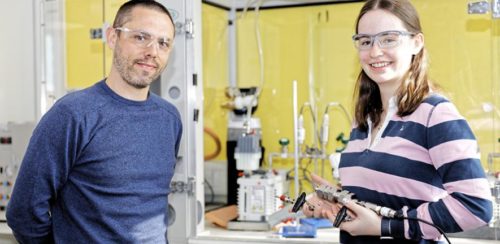Researchers have created a low-cost gadget that can absorb carbon dioxide gas selectively while charging. The CO2 can then be discharged in a regulated manner and collected to be reused or safely disposed of as it discharges.

The supercapacitor device is the size of a two-pence coin and is manufactured in part from renewable resources such as coconut shells and seawater. The supercapacitor is made up of two positive and negative charge electrodes. The team tried cycling from a negative to a positive voltage to lengthen the charging period from prior trials in work headed by Trevor Binford while finishing his Master’s degree at Cambridge. The ability of the supercapacitor to trap carbon was boosted as a result of this.
The supercapacitor, developed by University of Cambridge researchers, could help power carbon capture and storage technology at a reduced cost. “We found that that by slowly alternating the current between the plates we can capture double the amount of CO2 than before,” said Dr Alexander Forse from Cambridge’s Yusuf Hamied Department of Chemistry, who led the research.
“The charging-discharging process of our supercapacitor potentially uses less energy than the amine heating process used in industry now,” said Forse. “Our next questions will involve investigating the precise mechanisms of CO2 capture and improving them. Then it will be a question of scaling up.”
“We want to use materials that are inert, that don’t harm environments, and that we need to dispose of less frequently. For example, the CO2 dissolves into a water-based electrolyte which is basically seawater,” says co-author Grace Mapstone. This supercapacitor, however, does not absorb CO2 on its own; it must be charged in order to draw in CO2. When the electrodes become charged, the negative plate sucks in CO2 gas while ignoring other emissions that do not contribute to climate change, such as oxygen, nitrogen, and water. The supercapacitor absorbs carbon while also storing energy using this way.
Dr Israel Temprano, a co-author on the paper, helped to the effort by creating a gas analysis approach for the device. A pressure sensor responds to variations in gas adsorption in the electrochemical device in this method. The findings from Temprano’s research help to pinpoint the exact process at work inside the supercapacitor during CO2 absorption and release.
Click here to access their study.






